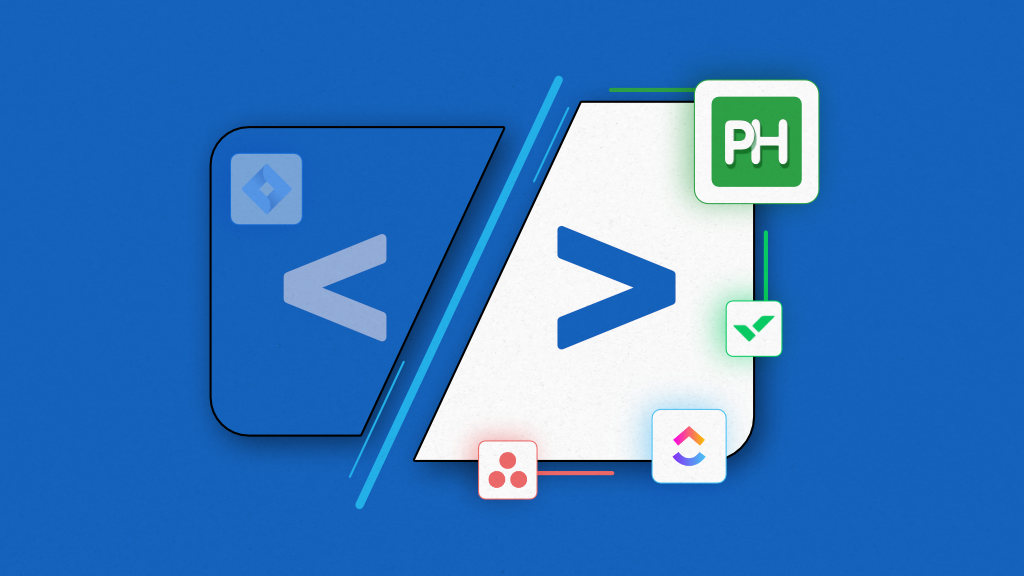Are you looking for Jira alternatives? This article provides a list of alternatives to Jira Software. We’ll examine various factors to help you determine which software or service suits your team best.
When people check out different project management tools, they consider several factors.
These include the ease of decision-making and purchasing, compatibility with other tools, ease of use, available support, and specific functionalities.
Let’s explore these project management tools together to find the right one for you.
But before we get into that, let’s start with the basics: What exactly is Jira
15 Best Jira alternatives and competitors
1. ProofHub

ProofHub is a powerful tool that simplifies project management by combining tasks, discussions, file sharing, Gantt charts, time tracking, and proofing in one place. While ProofHub offers a range of customization options, it maintains a focus on simplicity and ease of use. You can tailor your workspace to fit the specific needs without overwhelming complexity.
ProofHub is useful for a wide range of teams and industries, including software development, marketing, design, education, and more. It offers flat pricing with unlimited users, making it ideal for growing teams seeking transparency and collaboration without per-user costs.
Features
- Chats: Send direct messages, get quick replies, and use emojis to make workplace conversations fun.
- Discussions: Create discussion topics and collaborate on them with teams and clients in one place.
- Announcements: One place where you can recognize team achievements, and project success, and celebrate other important events.
- Gantt Charts: Set dependencies, and due dates, identify the critical path, and plan projects/tasks effectively.
- Kanban Boards: Divide projects into tasks/subtasks within workflow stages of your choice and get notified when each task moves from one stage to another.
- Recurring tasks: Set tasks to repeat at specified intervals.
- Calendar View: Get an overview of your events, tasks, and milestones in one place.
- Custom Roles: Define custom roles and provide access to them according to the organizational workflow.
- Notes: The perfect place to store ideas, suggestions, project details, minutes of the meeting, etc.
- Files: Store, organize, share, and retrieve all your files and documents without wasting a second.
- Proofing: Streamline the review/approval process with inline comments and advanced markup tools.
- Timesheets: Track billable/non billable hours both manually and using timers and save all your time data safely.
- Reports: Get detailed insights about your resource and project in a single click.
- Integrations: Seamlessly access Freshbooks, Google Calendar, iCal, Box, Dropbox, and OneDrivek within one software.
- Mobile App: Manage your projects and collaborate with teams even on the go using an intuitive mobile application.
Pros
- A user-friendly interface that anyone can use, even without a manual.
- All-in-one platform with extensive features for seamless project management.
- Customizable options to meet various project requirements without unnecessary complexity.
- Efficient communication tools for seamless teamwork.
- A flat-rate pricing structure, which means you can add as many users as you want.
- Responsive customer support for all your needs.
Cons
- No free plan is available, but you can avail of its 14-day free trial.
Pricing
ProofHub offers a 14-day free trial, and two flat pricing plans to choose from:
- Essential: $45/month billed annually (for unlimited users up to 40 projects).
- Ultimate Control: $89/month billed annually (for unlimited users, projects, and features).
*Special discounts for nonprofits.
2. Ora.pm
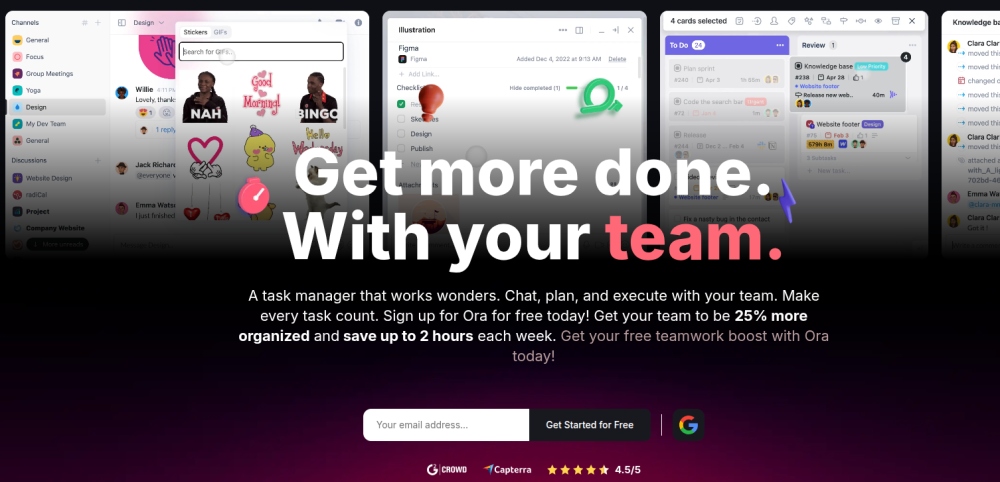
Ora.pm is great for teams looking for a simpler, more intuitive tool that doesn’t sacrifice functionality. It offers task management, time tracking, Kanban boards, and agile workflows in a clean, easy-to-navigate interface.
You can track projects, tasks, time, generate status reports and manage your entire project lifecycle. Ora is ideal for small to mid-sized teams who want flexibility without the overwhelm.
Features
- Ora Board: a highly visual Kanban board.
- Ora Sprints: intuitive Scrum sprints.
- Time-tracking: track time as simple as playing/pausing a timer on a task.
- Timeline: manage your resources in a modern Gantt View & Schedule.
- Project Views: create multiple Kanban boards in one project.
- List Actions: automation that does the boring PM work for you.
- Integrate your favorite system (e.g. Git, so you see commits and their diffs directly in task details).
Pros
- User-friendly and visually appealing interface.
- Built-in time tracking.
- Flexible workflow automation and customization options.
Cons
- Limited scalability for large enterprises.
- Ora.pm has fewer integrations compared to Jira.
Pricing
Paid plans start at $5.99/user per month (if billed annually) and the Enterprise plan will cost you $27.99/user per month (if billed annually).
3. Bugzilla
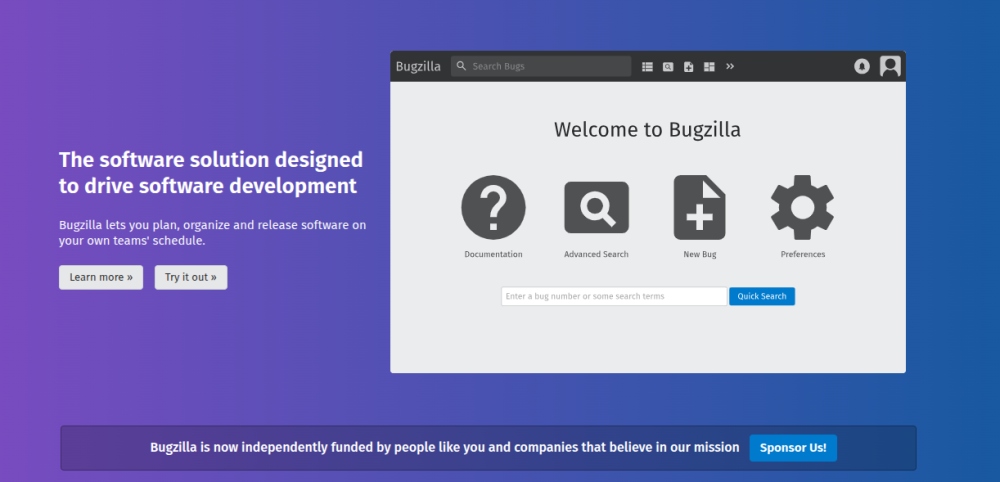
Bugzilla is focused primarily on efficient bug and issue tracking without the overhead of complex project management features. Developed by Mozilla, Bugzilla is a lightweight and open-source tool for managing the software development process. It offers strong search, reporting, and permissions control.
Bugzilla makes it possible to find the initial status of new issues and then allows the admin to configure which transitions need comments. Bugzilla is best suited for developers who want a performance-driven tracking system.
Features
- Keeps track of both bugs and changes in code.
- Powerful search facility which is lacking in JIRA.
- Create workflows of bugs.
- Security patches are published on a frequent basis.
- Submits and reviews patches.
- Supports various operating systems such as Windows, Unix, etc.
- Available in multiple languages.
- Integrated email capabilities and reports.
- Link different defects for tracking purposes.
- Customizable user interface.
Pros
- Free and open source.
- Lightweight and fast.
- Robust search functionality.
Cons
- Lacks advanced project management features.
- Outdated and less intuitive.
Pricing
What makes Bugzilla amazing is the fact that this tool is available for free. Although they offer paid support as well, for which you can visit their website.
4. ClickUp
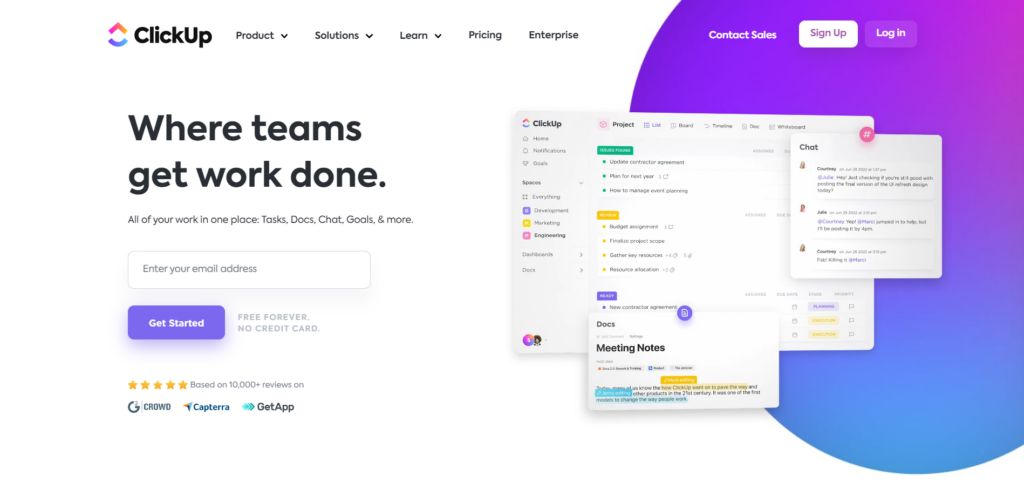
ClickUp offers everything from task management to goal tracking in one unified workspace. It supports multiple views to fit any workflow style with robust automation, docs, time tracking, and integrations.
ClickUp is ideal for teams that want maximum control and scalability without switching between tools.
Features
- Assign Comments when a task is too much.
- Stay on the same page with collaboration detection.
- Select multiple tasks.
- Sort tasks by multiple attributes.
- Integrations include Slack and GitHub.
- Support is offered over the phone and via email.
Pros
- User-friendly interface.
- Extensive customization options.
- 15+ customizable views for your tasks.
Cons
- Steep learning curve.
- Some users report occasional bugs while managing complex projects.
Pricing
ClickUp is available for free with only 100MB of storage. If you are looking for unlimited storage, you need to pay $7/user per month billed annually.
5. Teamhood
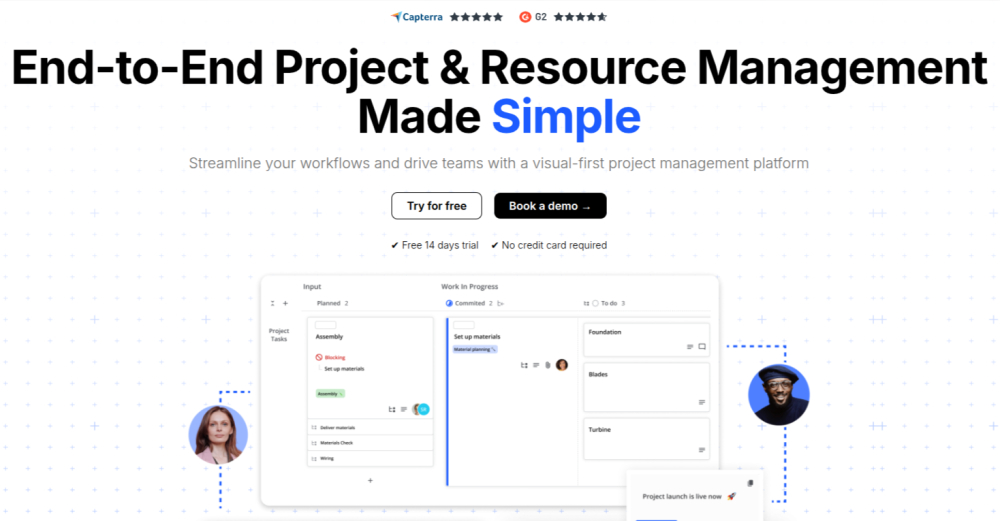
Teamhood (formerly Eylean) is a robust tool focused on agile execution with a flexible Kanban structure, timelines, and workload management. It lets you visualize work items for intuitive project management that allows you to automate workflow and track progress.
It’s perfect for teams that need visual planning, task hierarchy, and detailed performance tracking in a more intuitive setup than Jira.
Features
- Make the task board work for you and enjoy easy process control.
- Manage tasks and monitor the workload of your team members.
- Improve your TFS task management with a two-way integration.
- Use Kanban templates and WIP limits to manage the Agile process easily.
- Run your sprints smoothly with automated tools and a burndown chart.
Pros
- An intuitive and easy-to-use interface.
- Kanban boards for visualizing workflows.
- Customizable workflows and boards.
Cons
- Compared to Jira, fewer integration options with third-party apps.
- Some users report occasional inaccuracies in time-tracking features.
Pricing
The paid version of this board-based task management system starts at $9.5/user per month (if billed annually). It also offers a free trial.
6. Wrike
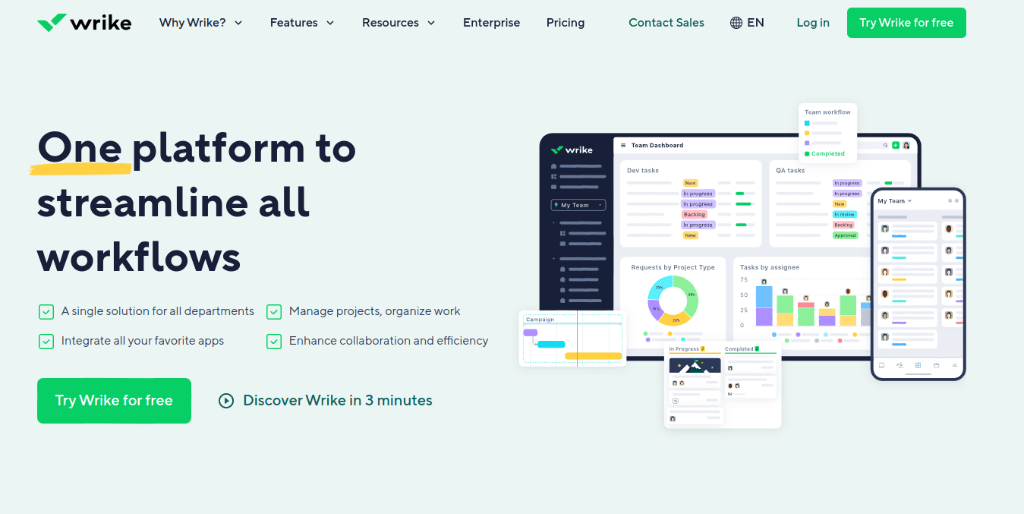
Wrike is a strong alternative for teams needing powerful project tracking with advanced reporting and team collaboration. It offers customizable dashboards, real-time updates, Gantt charts, workload views and integration with popular business tools like Microsoft, Google, and Adobe Creative Cloud.
ClickUp is best suited for mid-to-large teams that require visibility, control, and cross-functional collaboration.
Features
- View real-time reports and status for your team’s projects.
- Centralize communication with stakeholders while maintaining full context.
- Discuss project and task details with the full context of the work.
- Tag images and videos to provide specific feedback.
- Share interactive reports, and schedule notifications on a regular basis.
Pros
- Simple and intuitive interface.
- Customizable workflows and dashboards.
- Flexible for various project types including agile software development.
Cons
- Costs can scale quickly as team size grows.
- Advanced features may require training or initial effort.
Pricing
Wrike is free for up to 5 users. The paid version of the software is available for $9.80/user per month.
Read More: Looking for a Wrike alternative? Here is the list of tools you can try
7. Tempo Portfolio Manager

Tempo Portfolio Manager (formerly LiquidPlanner) is a tool focused on project planning, resource allocation, and aligning work with business goals. It offers clear visibility into multiple projects, timelines, and capacity planning across teams, enabling you to make smarter decision-making.
It also helps you with resource management by frequent reports that show how much work is on each team member’s plate, when they’re working on it, and if they need help or not. Tempo is ideal for project managers managing complex project portfolios.
Features
- Instant insight into progress, risks, and budgets
- Set expectations and share relevant information with the right audience
- Easily customize and share dashboards with stakeholders and external clients
- Track billable and non-billable costs with line-item expenses
Pros
- Track expenses and profitability alongside project progress
- Comprehensive resource management
- Advanced time tracking and reporting features
Cons
- Steeper learning curve
- Additional features come at a cost, making it more expensive than Jira
Pricing
The Professional Plan is available at $28 per user per month (if billed annually) in which you can create up to 50000 tasks and 500 projects.
8. Infinity
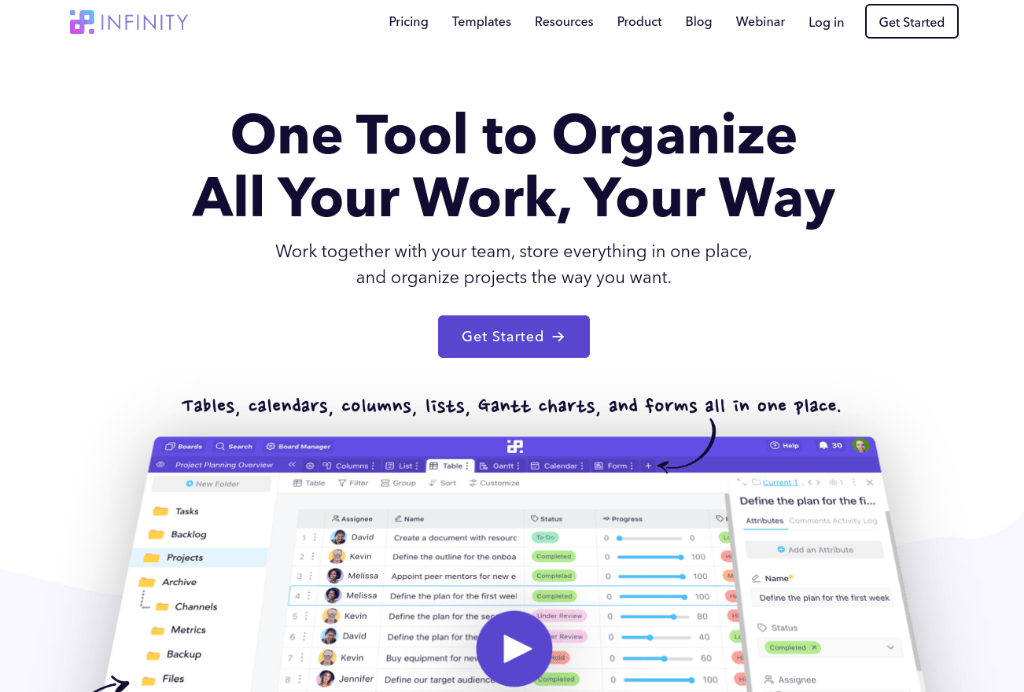
Infinity is great for teams that want full control over how they organize projects, without unnecessary complexity. It lets you build custom workflows using boards, tables, calendars, and forms, according to your exact needs.
With drag-and-drop ease and a visually clean interface, it adapts to different team sizes and industries. It is ideal for teams who value structure, simplicity, and customization.
Features
- Use boards, folders, subfolders, and items to create a structure that works best for you.
- Manage tasks effectively and monitor your team’s workload seamlessly.
- View your data in 7 different ways: tables, columns, charts, forms, calendars, Gantt charts, and lists.
- Automate repetitive tasks with ease and save time while working.
- Integrate Infinity with all the tools you use on a daily basis thanks to Zapier and other integrations.
Pros
- Flexible customization options.
- Simple and easy-to-use interface.
- Infinity provides affordable pricing options.
Cons
- Lacks some of the advanced features that Jira offers, such as detailed issue tracking and agile reporting functionalities.
- May not perform well for extensive, multi-layered projects.
Pricing
Infinity’s pricing starts at $6 per user per month for Basic plans and $9 per user per month for Pro plans. Both plans are billed annually. It also offers a 14-day free trial for users who wish to test the system before fully committing.
9. Workzone
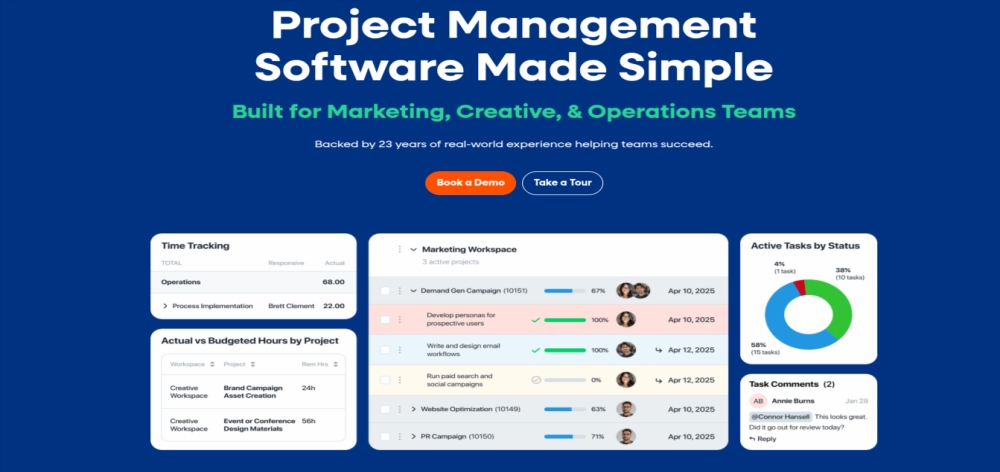
Workzone offers a more structured and user-friendly experience than Jira, It offers powerful features like task dependencies, Gantt charts, proofing, workload management and real-time project dashboards.
Workzone is ideal for teams that need visibility without the overwhelming features. It is intuitive and easy to use software even for teams with non-technical users. It is suited for mid-sized teams managing multiple projects simultaneously.
Features
- Individual workspaces for every team.
- Project and task templates.
- Personalized to-do lists and task dependencies.
- Workload reports.
- Time tracking.
- Easy file sharing.
Pros
- Built-in document management.
- Easy-to-use interface.
- Customizable dashboards.
Cons
- Lack of some of the advanced project management features and integrations.
- May struggle with the needs of larger-scale projects.
Pricing
The paid pricing of Workzone starts from $24 per user per month, which is their basic Team plan, and for their Enterprise plan, you need to schedule a demo.
10. Asana
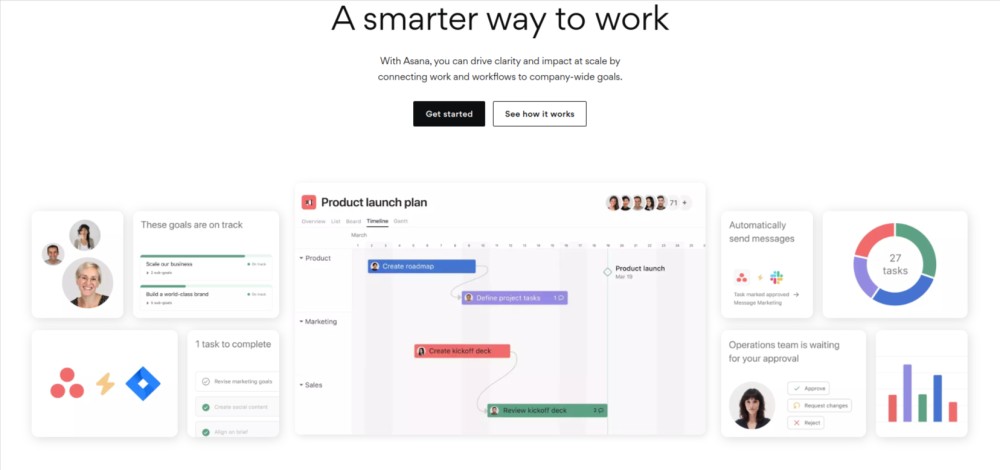
Asana is suitable for teams that want to stay focused on goals, manage tasks and projects without getting bogged down by technical complexity. It offers different task views like: lists, boards, timelines, and automation to keep workflows organized and efficient.
With strong collaboration features like comments, tags, and integrations, it keeps everyone aligned. Asana is ideal for marketing, operations, and cross-functional teams looking for task management and collaboration.
Features
- Set priorities, deadlines and assign tasks, and share details in one place.
- Create visual project plans to see how every step maps out over time.
- Address risks and report updates to stakeholders.
- Offers 100+ Asana integrations.
Pros
- Built-in collaboration tools, such as task comments, and project conversations.
- Less complex interface compared to Jira.
- Multiple task views such as list, board, or calendar.
Cons
- Limited tracking and reporting features.
- Less suitable for Agile frameworks.
Pricing
You can use Asana’s basic plan for free. The Premium plan starts from $10.99 per user per month, whereas their Business plan will cost you $24.99 per user per month billed annually.
Also read: 11 Powerful Asana Alternatives for Project Management in 2025
11. Hygger
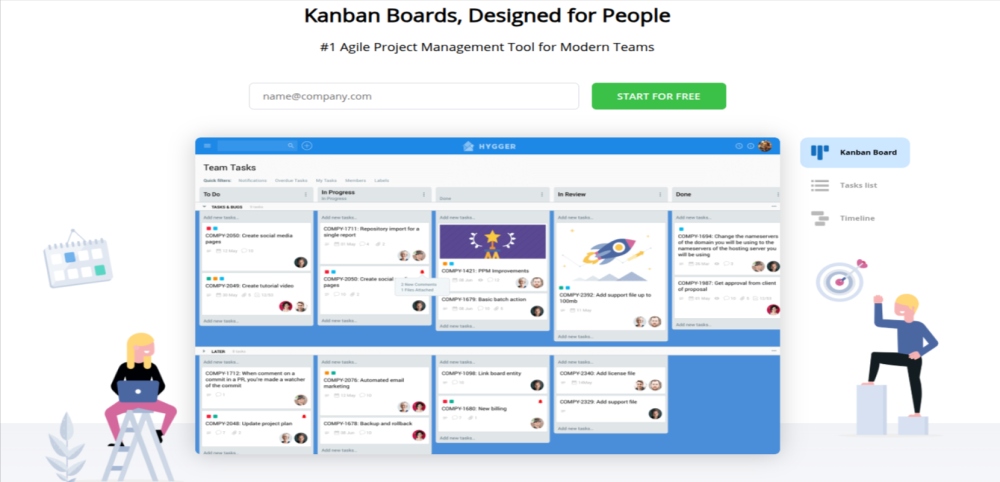
Hygger is a simple agile scrum project management software with powerful prioritization tools like value vs effort matrices. It supports Kanban, Scrum, product management, backlog management and roadmapping features in a clean and modern interface.
It allows you to break your goals into an actionable plan so that you can visualize them into beautiful roadmaps that your team and stakeholders will love. Hygger is ideal for teams that want to focus on building the right features efficiently.
Features
- Break down your project plan into individual tasks.
- See exactly what should be done and promptly detect the bottlenecks.
- Manage all your conversations, checklists, and files in one place.
- Prioritize intelligently using the Value/Effort Matrix.
- Create comprehensive and accurate timelines.
- Visualize your custom workflows using Kanban boards.
- Use swimlanes to highlight the most important tasks.
Pros
- Simplified setup and customization options.
- Flexible and cost-effective pricing plans.
- Built-in prioritization and roadmap features.
Cons
- Limited reporting and analytics capabilities.
- Smaller user base and community.
Pricing
Hygger is available in three pricing options – the free Basic plan in which you get only 100 MB storage, the Standard plan which costs $7 per user per month and the Enterprise plan at $14 per user per month.
12. Backlog
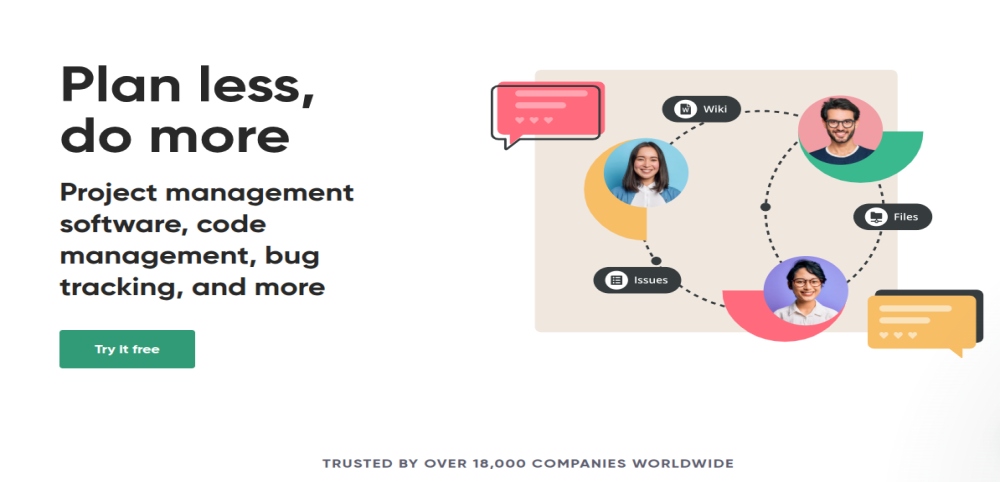
Backlog is an online project management tool built for developers. It supports task tracking, bug reporting, Git and SVN repositories, wikis, and custom workflows. Its interface is intuitive, making it accessible for both technical and non-technical team members.
Backlog is ideal for software teams looking for an all-in-one platform to manage both code and collaboration.
Features
- Push notifications for new issues.
- History thread of issue updates.
- Drag and drop file attachments.
- Create, assign, and update tasks.
- Set due dates to keep work on schedule.
- Breakdown tasks into subtasks and checklists.
- Pull requests, merge requests, and branches.
- Keep all files in a central location.
- Invite clients, vendors, and freelancers to projects with guest roles.
- Create wikis for all project members.
Pros
- Built-in wiki and file management features.
- Streamlined and intuitive user experience.
- Task and issue tracking.
Cons
- Limited selection of integrations with other tools compared to Jira.
- Lack in reporting and analytics features.
Pricing
The basic plan with limited features is free. Paid plans start from $35 per month for up to 30 users and go up to $175 if you want unlimited users.
13. QuickBase
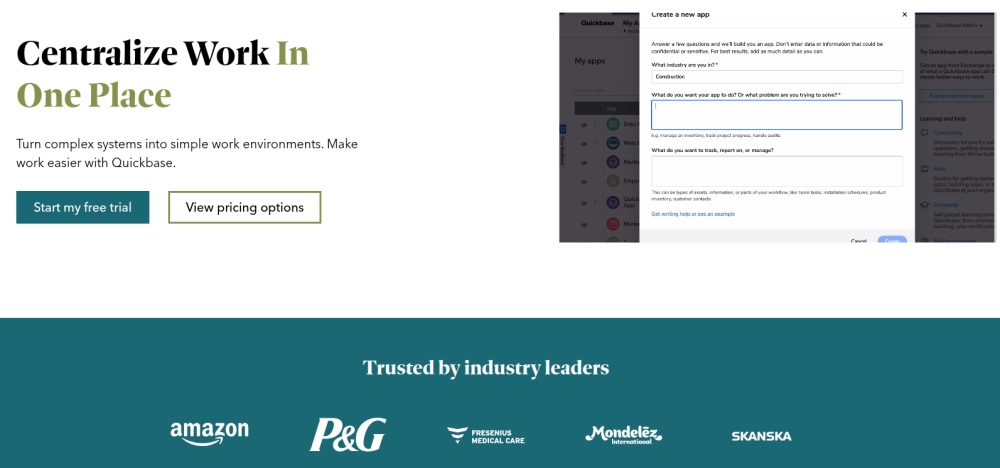
QuickBase is a strong alternative to Jira for organizations that need tailored project management systems without a complex system. It allows users to build custom apps, create tools to collect, track, and analyze information easily without getting immersed in complicated coding.
With powerful projects, compliance, resource, workflow management, reporting and real-time dashboards, it adapts to unique business processes. QuickBase is ideal for enterprises managing complex and dynamic projects.
Features
- Manage projects, service requests, supply chain, documents.
- powerful, scalable, secure platform that eliminates manual processes.
- Gain real-time visibility into projects and data.
- Time management by automating manual tasks.
- Configure rich and interactive dashboards to visualize data.
Pros
- Build custom applications without extensive coding knowledge.
- Centralized data management.
- Customizable forms and reports.
Cons
- Limited Agile and Scrum support.
- Lack some advanced project management features.
Pricing
You will get a 30-day free trial. The team plan is going to cost you $35/user per month and the Business plan comes at $55/user per month (if billed annually). For an enterprise plan, you need to contact their support team.
14. Kantata

Kantata (formerly Mavenlink) is a powerful software for businesses needing advanced resource planning and project accounting. It is a tool specifically designed for service organizations that enables them to connect with people, create projects, and make profits.
Kantata combines project management, time tracking, budgeting, and forecasting in a single platform. Kantata is best suited for agencies, consultancies, and firms managing multiple projects.
Features
- Role-based estimating and business intelligence.
- Advanced analytics to view performance.
- Project accounting and team collaboration.
- Efficient task and time tracking.
Pros
- Straightforward setup and onboarding process.
- Integrated chat and document sharing.
- Built-in Professional Services Automation (PSA).
Cons
- Steeper learning curve for advanced features.
- Limited integration options.
Pricing
You need to request a quote for pricing details.
15. VivifyScrum
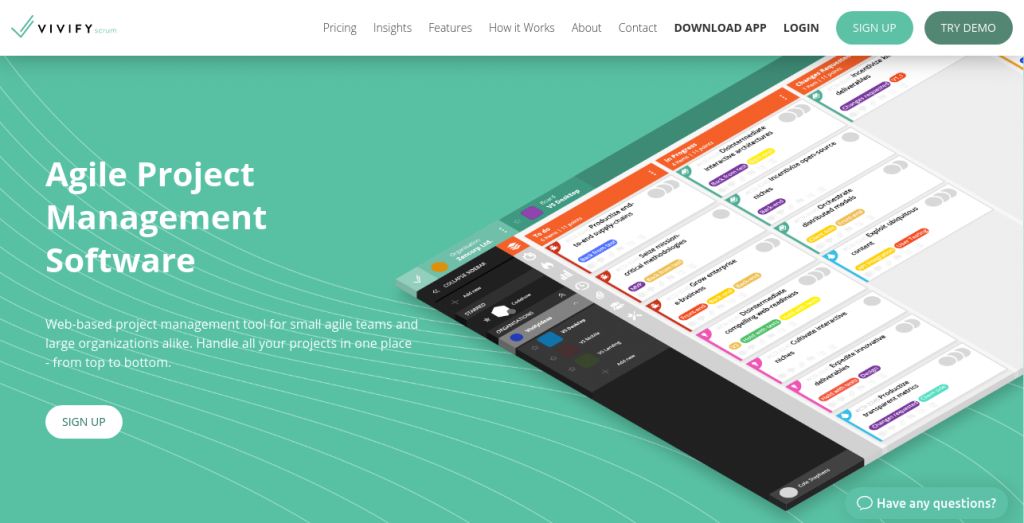
VivifyScrum is designed specifically for teams using Scrum and Kanban methodologies. It offers great features such as backlog management, sprint planning, time tracking, invoicing, and team collaboration.
VivifyScrum is lightweight yet powerful, making it easy to adopt without compromising agility. It is ideal for tech teams looking for affordable, all-in-one agile tools.
Features
- Task & issue template creation.
- Burndown chart, Scrum metrics, and sprint goals.
- Assigned comments and multiple assignees per task.
- Invoicing and internal documentation.
- Time tracking for each task within the app.
- Team management and report generation.
Pros
- Suitable for Scrum or Kanban frameworks.
- Customizable dashboard.
- Visual project tracking through burndown charts and cumulative flow diagrams.
Cons
- Steeper learning curve.
- Limited integration options.
Pricing
VivifyScrum is available at a pricing of $10/month for up to 10 users. However, the price increases as you increase the number of users.
What are the limitations of Jira?
Jira may work well for some organizations, but it might not be the best fit for every team. It comes with some challenges. Many teams find that while Jira has powerful features, it can often seem overly complex and outdated.
Here are a few reasons to look for an alternative:
- Complex user interface: Jira’s user interface design can be confusing and overwhelming for users, leading to a frustrating user experience.
- Steep learning curve: Mastering Jira often requires a significant investment of time and effort, which can be a barrier for teams looking for a more intuitive solution.
- Customization limitations: Customizing Jira to fit your team’s specific needs can be a complex and time-consuming process, and may require third-party plugins and technical setup.
- Costly pricing structure: Jira’s pricing model can become expensive as your team grows. Many competitors offer flat pricing, or better value for small and mid-sized teams.
- Limited collaboration for non-tech teams: Jira is often developer-centric. Non-technical departments like marketing, HR, or design may find it difficult to use for their workflows.
What key features should a Jira alternative have?
The tool should have a user-friendly interface, support for agile project management, customizable workflows, time tracking, reporting, affordable pricing, and other features. Here are the essential features a strong Jira alternative should offer:
- User-friendly interface: The tool should be intuitive and easy to use for technical and non-technical team members. A clean UI helps reduce the learning curve and improves adoption.
- Agile project management support: Look for features like Scrum boards, Kanban boards, sprint planning and task dependencies.
- Customizable workflows: The tool should allow you to customize workflows, task statuses, and automate your team’s processes.
- Collaboration tools: The tool should have built-in communication features like chat, comments, file sharing, proofing, @mentions, and discussions to keep teams aligned without needing external tools.
- Integrations with other tools: Make sure the tool integrates with popular platforms like Slack, Freshbook, Google Drive, Google Calendar, and more for a seamless workflow.
- Affordable and transparent pricing: Look for tools with flat pricing plans, which are often more cost-effective than per-user pricing. Look for tools that offer good value as your team scales.
Conclusion
In summary, while every Jira alternative offers robust project management solutions, their focus, features, and pricing structures may vary. ProofHub emphasizes simplicity and ease of use, making it suitable for a broad range of teams, while Jira offers extensive customization and integration options tailored towards software development teams. Ultimately, the choice will depend on the specific needs and preferences of your organization.
